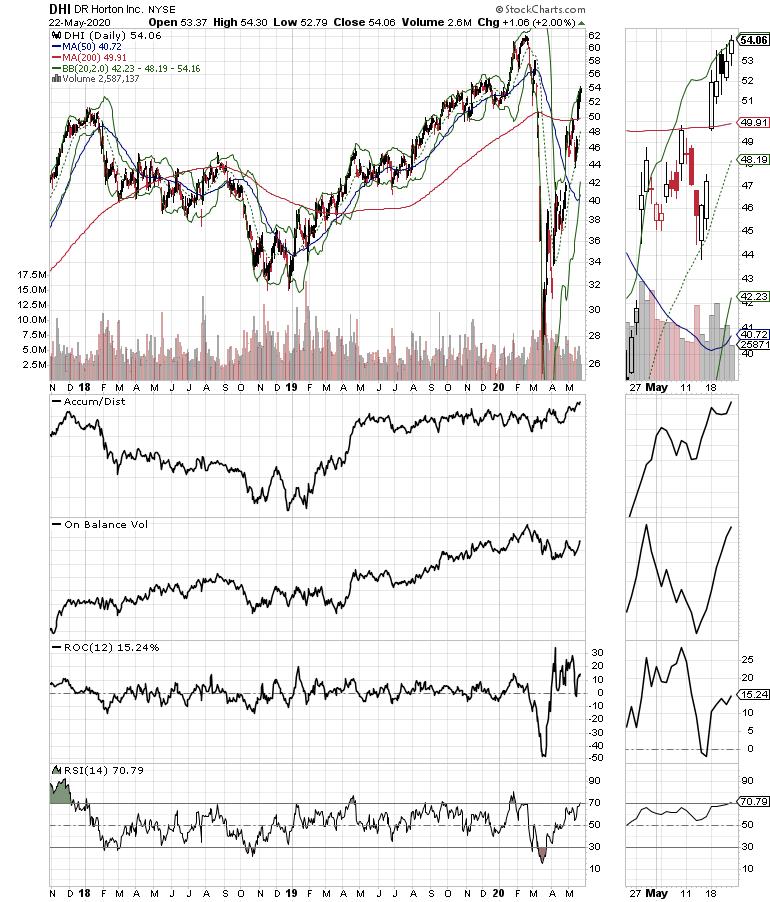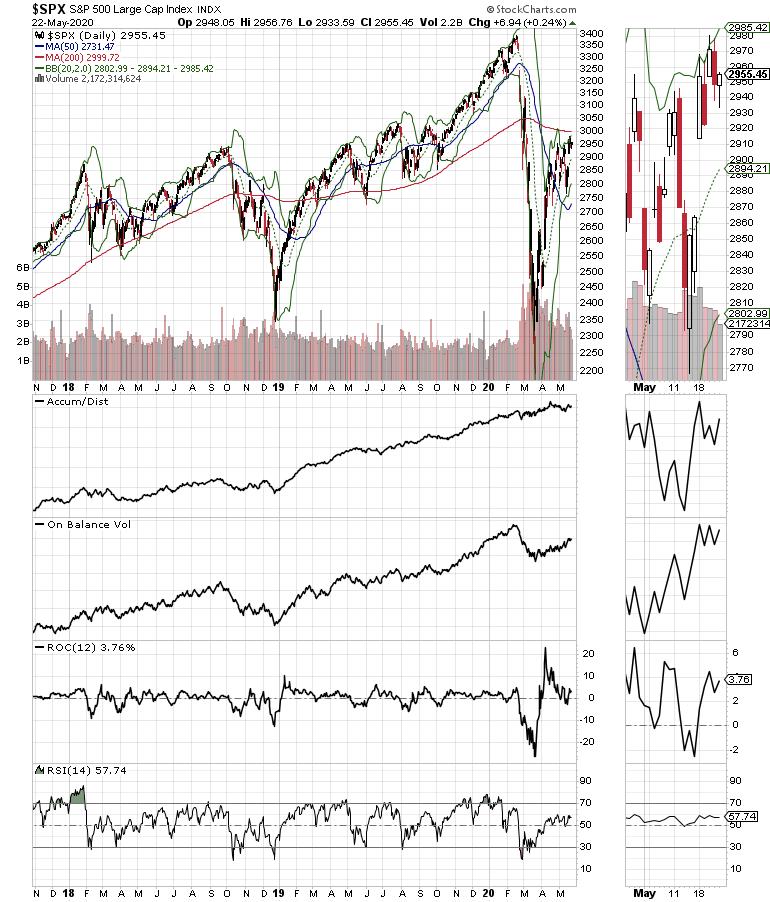Either institutional investors or the retail masses are going to face a serious market-related decision in the next few weeks to months. History says that retail investors are being lured into a bull trap. Yet this is a market where the unthinkable is a daily occurrence, which means that, while history should not be ignored, it can and should be questioned.
As we head into Memorial Day, the official start of the so-called “summer doldrums” and the often elusive “summer rally” season, investors should consider if the same old rules apply to the stock market in the Post New Normal. And here is why. Recent trading patterns and data suggest that the recent stock rally has been mostly due to an influx of money from retail investors, namely young people using their online trading apps and, in many cases, moving stimulus money into the stock market, as institutional investors who initially panic sold in response to COVID-19 have stayed on the sidelines, missing the rebound.
So the big questions are: what happens if the individual retail investor is right for once? What if the worst is actually over? And what will happen to stock prices if institutional investors decide to play catch-up? By the same token, there is also the possibility that the old order will return and the recent rally fades, leading to a resumption of the downtrend and yet another massacre of retail investors.
Is the Worst Really Over?
The gloom and doom is thick, and for good reason, as the uncertainty of the COVID-19 crisis, rising geopolitical tensions (Hong Kong, China, the Middle East) and the looming presidential election, along with their potentially epic repercussions, continue to affect MEL, the complex adaptive system comprised of the financial markets (M), the economy (E) and people’s lives and financial decisions (L).
Moreover, as I usually point out, by the time the U.S. futures market opens on Sunday night and by the time the market opens on Tuesday, due to the Memorial Day holiday, a lot can happen. Nevertheless, while there is plenty to worry about, there are also some encouraging signs that the system has begun to adapt to the Post New Normal (PNN) reality.
Indeed, what we are experiencing is a sort of rolling reality, with new layers appearing on key central concepts over time. For example, on May 17, I noted that the weekly jobless claims number would be a bellwether for the future. Specifically, I noted that a drop in this key statistic would likely be bullish for the economy, as it would document any degree of people getting back to work that was appearing in the recent past.
And, while the most recent number initially seemed to be another negative, there were some interesting statistical gymnastics that were highlighted in a more in-depth analysis of the data, as well as recent polling results that suggest that we may be starting to see a bottom in job losses, which should translate to an improvement in jobless claims perhaps as early as the next week or two.
Of course, it’s nearly impossible to know whether the worst is over, and things could change in an instant. But it’s also not out of the realm of plausibility that the situation may be improving.
Indeed, the way MEL adjusts is just as important as what the virus does. Thus, if and as people find ways to return to work, the odds of improvement in the economy, although possibly regionally diverse, are likely to increase. In fact, while statistics such as GDP and national employment statistics look at the macro situation, as this dynamic evolves, it will be paramount to look at regional data, with special attention to migration patterns from areas that are having more problems, along with areas where the virus has done less damage and where the economy has recovered and how that migration will affect the inner workings of MEL.
From an investment standpoint, macro, sector and bellwether analysis remain crucial, as I highlight below and in my latest StockCharts.com Your Daily Five video. And, if you’re not a subscriber yet, check out our Free Trial information here.
From Crisis to Transition
As MEL evolves, it’s important to change our investment focus to the type of stock that is working at the moment, which is why this week I’m looking at a stock which is suddenly out of favor – Campbell Soup (CPB) – and contrasting it to one that is – homebuilder DR Horton (DHI).

Campbell’s had been doing quite well during the early stages of the COVID-19 crisis, as investors bet on food shortages and potential long-term periods of having to stay at home. But as the trend toward ending the lockdowns began to take hold, CPB rolled over and is now on the verge of a long-term technical breakdown as it tests its 200-day moving average.

On the other hand, DR Horton, the largest homebuilder in the U.S., continues to climb as weekly mortgage data shows that demand for new homes is much more robust than would seem normal during a pandemic. Moreover, because supply for homes remains tight, the long-term supply fundamentals for DHI remain favorable – barring a complete economic meltdown, of course.
Certainly there are no guarantees that the U.S. economy will achieve any improvement in the short term, much less a lasting recovery (although we are starting to see somewhat encouraging, albeit anecdotal data in some areas of the country, as I note above). But, more importantly from a trading standpoint, money is flowing out of the lockdown stocks into stocks that presumably would benefit from a recovery, which means that traders retail or otherwise are betting on some sort of improvement.
Market Breadth Remains Stuck in a Rut
The NYSE Advance Decline line ($NYAD) is stuck in a rut between its 20-, 50- and 200-day moving averages providing support and its recent high offering resistance. This technical posture clearly reflects the ambivalence of traders and the uncertainty of the moment. Until this situation breaks one way or another, the uptrend remains vulnerable.

Meanwhile, the S&P 500 (SPX) continues to struggle at the resistance area of its 200-day moving average near 3000, although it remains above its 20- and 50-day moving averages.

Elsewhere, the Nasdaq 100 (NDX) has a shelf of support between 9150 and 9300, but, if the index fails to move above 9750, we may be looking at a double top.

Therefore, from a technical standpoint, just as from a fundamental standpoint, the market is trying to decide its next course of action as we head into the traditionally slow summer trading season.
For an in-depth look at how I analyze the markets, check out my May 25, 2020 interview with StockCharts.com’s David Keller on his show Behind the Charts on StockChartsTV. For air time and details, see the image below:

Who’s the Greater Fool?
The stock market could easily crash and burn tomorrow and the institutions could say “I told you so” without any qualms. Yet data suggests that a big change has taken place in the markets. And whether the data is believable or whether it holds up over time is as important as the data itself.
Nevertheless, the bottom line at the moment is that institutional traders are not their normal selves these days. By sitting out the recent rally, they will have to either stay out until the market falls again or play catch-up and buy stocks in order to keep their clients happy. If they do the latter, then the stock market will likely make significant gains as they pour money in, due to fear of missing out on whatever is left of the rally. If they don’t, then things could get very interesting.
Certainly they are not giving us any clues. But some of their problem may be due to their reliance on computer trading algorithms, which base trading decisions on headlines without balancing them with field observations. In other words, as the headlines darken, institutions may stay away from stocks.
Meanwhile, people who are out and about and applying the old Peter Lynch “kick the tires” investment method may see that the world is trying to bounce back and, consequently, may be willing to take chances on the stocks of companies which seem to be doing business. This would be especially noticeable in the price of any stock if the institutions aren’t around to challenge their assumptions and actions.
What that means for traders and investors is that we continue to look for stocks with favorable chart patterns and solid fundamentals, while, as usual, keeping an eye on the general trends of the market as we manage risk with position size, hedging as needed and profit-taking periodically on those stocks which reach our price targets.
Finally, it’s important to recognize that the pendulum may be swinging, at least temporarily, and that the world is truly changing. All of which means that we really are in uncharted waters now – those who adapt will survive, while those who fail to recognize the evolutionary process that is taking shape are likely to be left behind.
I own DHI.
Joe Duarte
In The Money Options
Joe Duarte is a former money manager, an active trader and a widely recognized independent stock market analyst since 1987. He is author of eight investment books, including the best selling Trading Options for Dummies, rated a TOP Options Book for 2018 by Benzinga.com and now in its third edition, plus The Everything Investing in Your 20s and 30s Book and six other trading books.
The Everything Investing in Your 20s and 30s Book is available at Amazon and Barnes and Noble. It has also been recommended as a Washington Post Color of Money Book of the Month.
To receive Joe’s exclusive stock, option, and ETF recommendations, in your mailbox every week visit https://joeduarteinthemoneyoptions.com/secure/order_email.asp.